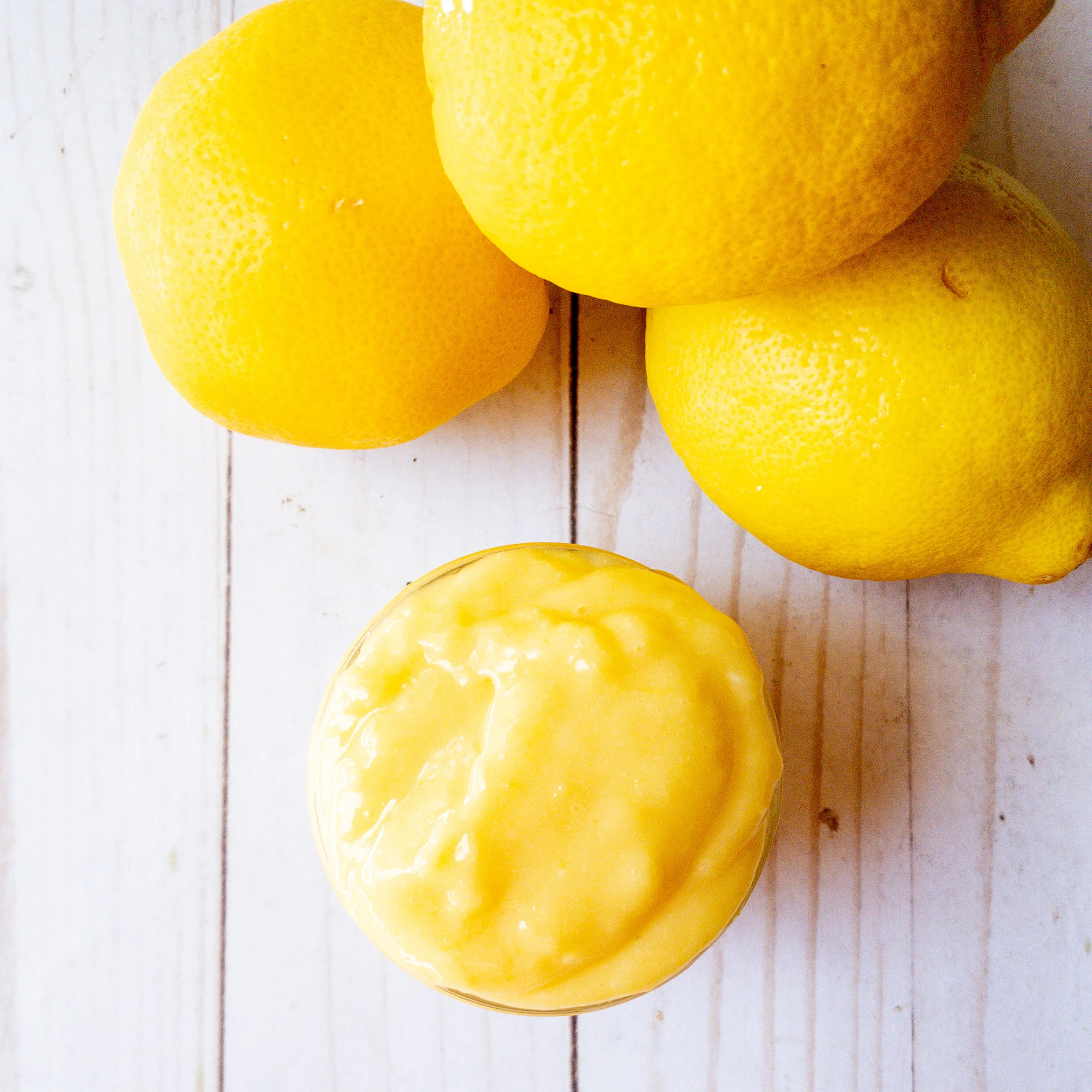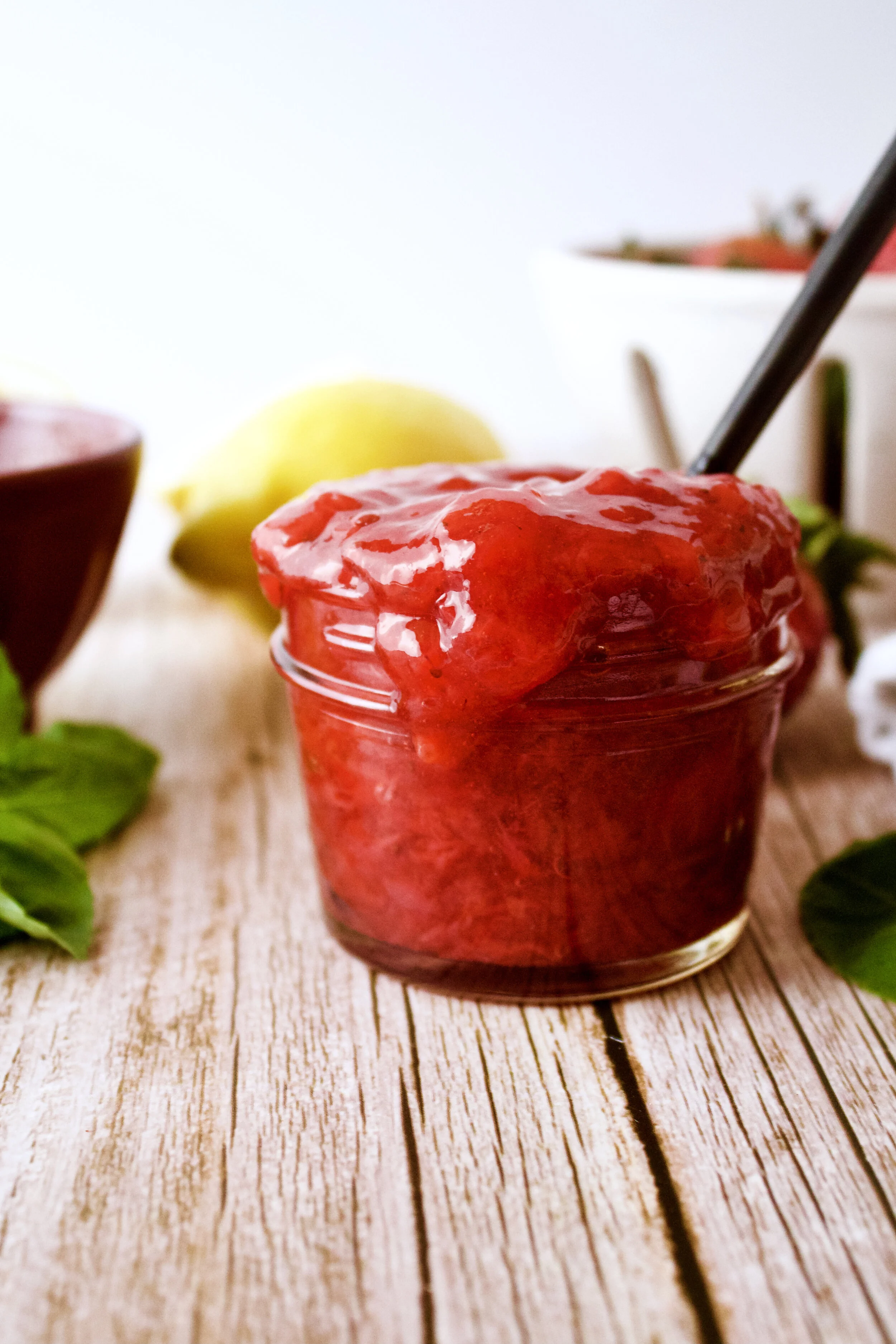Strawberry Lemonade Cake
Tender lemon cake layered with strawberry buttercream, lemon curd, and strawberry jam that beckons memories of strawberry lemonade in summertime. This cake is perfect for warm evenings with friends.
This post may contain affiliate links from which, at no additional cost to you, I may earn a small commission to keep this site running. Only products I myself would or do use are recommended.
This is kind of a redemption cake for me. I tried making a strawberry lemonade smash cake for our friend’s daughter’s first birthday. Sadly, in my attempt to make the frosting heatproof (it was over 100 degrees that day), I made a frosting that did not want to stick to the cake. It was cute, but not impressive.
So when we decided to make her a cake for her second birthday (just because we’re in quarantine doesn’t mean we can lavish love!), I decided to give it another try. Plus, these are friends of ours who are always willing to try my experiments. While this wasn’t my famous chocolate charity cake or Susie-Cakes-wannabe vanilla cake, both of which are highly requested, it was fun and light for summer and a refreshing twist on lemon dessert.
How to make strawberry lemonade cake
First, you need to make (or buy) the jam (or try this compote) and lemon curd. Those will need to set in the fridge. You can make them a few days before if that’s easier. The jam recipe I’ve included is for raspberry jam, but you can sub strawberries just fine as long as you keep the temperature low to prevent burning and cook a little longer to account for the extra water content in strawberries.
Next, make the cake. Start by infusing the milk with peeled lemon zest (see this post with tips about peeling). Let that cool while you prep everything else.
Update: try cold infusing the milk! The night before, combine the zest and milk in a jar, seal it and refrigerate it overnight. When ready to use, strain the zest and add a splash more milk as needed to still have the same amount indicated in the recipe.
You’ll reverse crumb the dry ingredients with the softened butter until it’s well-mixed, like wet sand.
Then you’ll mix the infused milk, eggs, and vanilla by whisking them together very well (you want your egg whisked thoroughly).
Combine that with the dry ingredients, scrape the bowl, then mix on medium-high until it’s fluffy. You’ll bake this in 2-3 cake pans (depending on the size and whether or not you want to cut the layers in half to get more filling—you have to do thin layers of filling, so thinner layers of cake let you squeeze more in there).
While the cake cools, make the strawberry buttercream. Be sure to wait until the end to add the strawberry powder so it doesn’t become gummy as you mix.
Once the cake is baked and cooled, make the lemon soak by heating lemon juice and sugar over the lowest heat setting you have. You just want to warm it, but lemon juice can become bitter if you heat it too high. Once the sugar is dissolved and the mixture is warm, brush it over cut layers of cake (either from cutting in half or from removing the domed top). If you don’t end up cutting the cake at all, brush a thin layer, let it soak, then brush another layer.
Let that set in for a few minutes then spread a thin layer of frosting. Create a dam by piping some frosting in a ring around the edge. Spread a thin layer of lemon curd then a thin layer of jam. Continue doing this between each layer. If it starts to slide as you add more layers, be sure to use thin layers of jam and curd and also chill before adding another layer of cake to build some stability.
If you notice, I forgot to pipe a dam in the bottom layer and it leaked a bit. Frost with strawberry buttercream (thick or thin—your choice). Chill at last 30 minutes to set the frosting.
Enjoy! Leftovers should be kept in the fridge if you used homemade lemon curd. You can keep them fresh by spreading a thin layer of frosting on the cut portion of cake or by pressing plastic wrap directly on that cut section then covering the whole cake as well.
Tips for this recipe
Don’t peel or zest the pith
The pith is the white part between the zest and the fruit. It is bitter (albeit, very healthy for you), so you want to make sure that you carefully peel just the zest with the potato peeler and don’t over zest with the grater/traditional zester.
Don’t over-soak the cake
If your cake has too much soak, it will become difficult to frost. Butter and water don’t play nice, and the same goes for frosting and lemon juice. The only workarounds for this are to emulsify the two by beating them vigorously until they blend or to melt the butter. Neither of those are possible when frosting your cake, so avoid the issue altogether and add just enough soak.
You can easily experiment to know how much you need. Use the domed top to get a feel for how much the soak actually soaks into the cake. Then you can do a taste test as well. :)
Use the frosting “dam” to keep filling inside
Along with trying to frost an overly moist cake, it’s hard to frost a cake with jam or curd spilled down the sides. Some frostings will just mix with the filling, but this is one of those cakes where they might not always play nice, so use the ring or “dam” method.
Use freeze dried strawberries to create a sturdy frosting
There’s a reason I call it my sturdy strawberry buttercream. Usually, you create strawberry buttercream by adding some jam or a reduction to the buttercream. But that weakens the structure of the buttercream, making it less sturdy as you build your cake. Because the filling is so loose, you need a sturdy frosting to counter that. Other would work, too, like a strawberry Swiss meringue buttercream. But I’m still struggling to master that particular frosting, so I can’t very well ask you to go and take a stab at it.
See original posts for more tips
The lemon curd can be finicky if you’ve never tempered eggs before, and the jam needs to be cooked until thick enough to spread (but not beyond that). The cake is from this original post with more helpful hints, as is the buttercream. So check those out, especially if you’re a novice baker.
My cake tools
Here are my must-have tools I use for making this cake. Affiliate links provided.
Mesh sieve (because sifting is KEY for a fluffy cake)
Silicone liners for 8” cake (or for 6” cakes)
8” aluminum cake pans or6” aluminum cake pans(I’ve found nonstick doesn’t bake as evenly)
Old-fashioned Lemon Cake
- prep time: 1 hour, 15 minutes (this includes making the lemon curd, jam, and buttercream)
- cook time: 30-35 minutes
- total time: 1 hour, 50 minutes (plus chill time for lemon curd and jam)
Servings: 12-16 (three layer 6” or two layer 8-9” cake)
Ingredients:
- 1 ⅓ cups whole milk
- peeled zest of 1 large lemon (see note)
- 2 ¼ cup cake flour (or 2cups flour plus ¼ cup cornstarch sifted together 2-3 times)
- ½ teaspoon baking soda
- 2 teaspoons baking powder
- ½ teaspoon salt
- 1-2 tablespoon grated lemon zest
- 1 cup sugar
- 1 cup unsalted butter, room temperature
- 4 eggs, room temperature
- ½ tablespoon vanilla extract
- ½ cup lemon juice (optional—for the lemon soak)
- ⅓ cup sugar (optional—for the lemon soak)
- lemon curd (half a jar or half a homemade batch)
- strawberry preserves/jam (half a jar or half a homemade batch)
- one batch strawberry buttercream
Instructions:
- First, make the lemon curd and strawberry jam (subbing stemmed and halved fresh strawberries for the raspberries, avoid frozen strawberries as the flavor isn’t as strong). It needs at least 1-2 hours to chill and set, so you could make it ahead of time or use store bought.
- Next, make the cake. In a small saucepan, heat the milk and peeled lemon zest over medium heat until bubbling. Remove from heat and let steep until it comes to room temperature, about 30 minutes. In the meantime, you can get started on the rest of the steps while it cools (you can take your time, the rest of the steps won’t take 30 minutes).
- Preheat oven to 350 and grease three 6” or two 8” (or 9”) cake pans with butter or baking spray. Line with parchment paper and set aside.
- In the bowl of your stand mixer (or a large bowl), whisk together the flour, baking soda, baking powder, salt, and grated lemon zest until you can smell some fragrance from the lemon, about 1 minute.
- Cut butter into several chunks. With the paddle attachment on low, add the butter one chunk at a time, letting it mix in a bit between additions. Once all the butter is added, scrape down the bowl then beat on medium for 2-3 minutes, until it is the texture of wet sand.
- By this point, the milk should be mostly cooled. Pour it back into the measuring cup and add a little more milk as needed to equal 1 ⅓ cup again. Combine this with the eggs and vanilla extract. Whisk until fully blended (ensuring the eggs are whisked well).
- With the mixer on low, slowly stream the wet ingredients into the flour/butter mixture. Once it’s all added, scrape down the bowl then beat on medium-high for 2-3 minutes, until it looks fluffy.
- Divide batter evenly between cake pans. Bake for 30-35 minutes, until a toothpick inserted in the middle comes out clean or with a few moist crumbs. Check it early, as climate and altitude greatly alter cook times. (Really high altitudes may need to increase the temperature to 375 but decrease the cook time by about 10 minutes.) Let cakes cool 5-10 minutes in the pan then remove to a wire rack until completely cooled, about 1 hour.
- While the cakes cool, make the strawberry buttercream. You could also make this up to a week before and refrigerate. Let it come to room temperature by the time you’re ready to frost (about 1-2 hours on the counter) and give it a good stir or whip with a hand mixer if it’s been in the fridge more than a day.
- When the cakes are cooled, cut off any domed tops and cut in half, if desired (to get more filling in). Then, make the soak by heating the lemon juice and sugar in a small saucepan over low heat just until the sugar is dissolved. Immediately brush over the cut side of the cake layers, using about 1-2 tablespoons per layer, depending what size pans you used.
- Assemble the cake. Frost each layer of cake with a thin layer of buttercream. Next, use a piping bag or plastic baggie with the end cut off to pipe a dam around the edge of the cake. Spread a thin layer of lemon curd then a thin layer of strawberry jam. Add the next layer of cake, cut side down, and repeat until you reach the top layer. Once you have to top layer on, add a crumb coat and chill for 10-20 minutes to set, then frost to desired thickness. Refrigerate for at least 30 minutes to set. (Note: if the layers seem to be sliding as you add them, refrigerate for 5-10 minutes before adding the next one so the buttercream dam hardens just enough to keep things sturdy.)
Leftovers will last 3-5 days and should be refrigerated unless you used jarred lemon curd that doesn’t have eggs in it. Seal the cut sides of the cake with a thin layer of frosting (chill a few minutes before adding it to make it easier to apply) or by placing plastic wrap directly onto the cut pieces. Seal tightly in a cake holder or with plastic wrap or foil.
Enjoy!




















